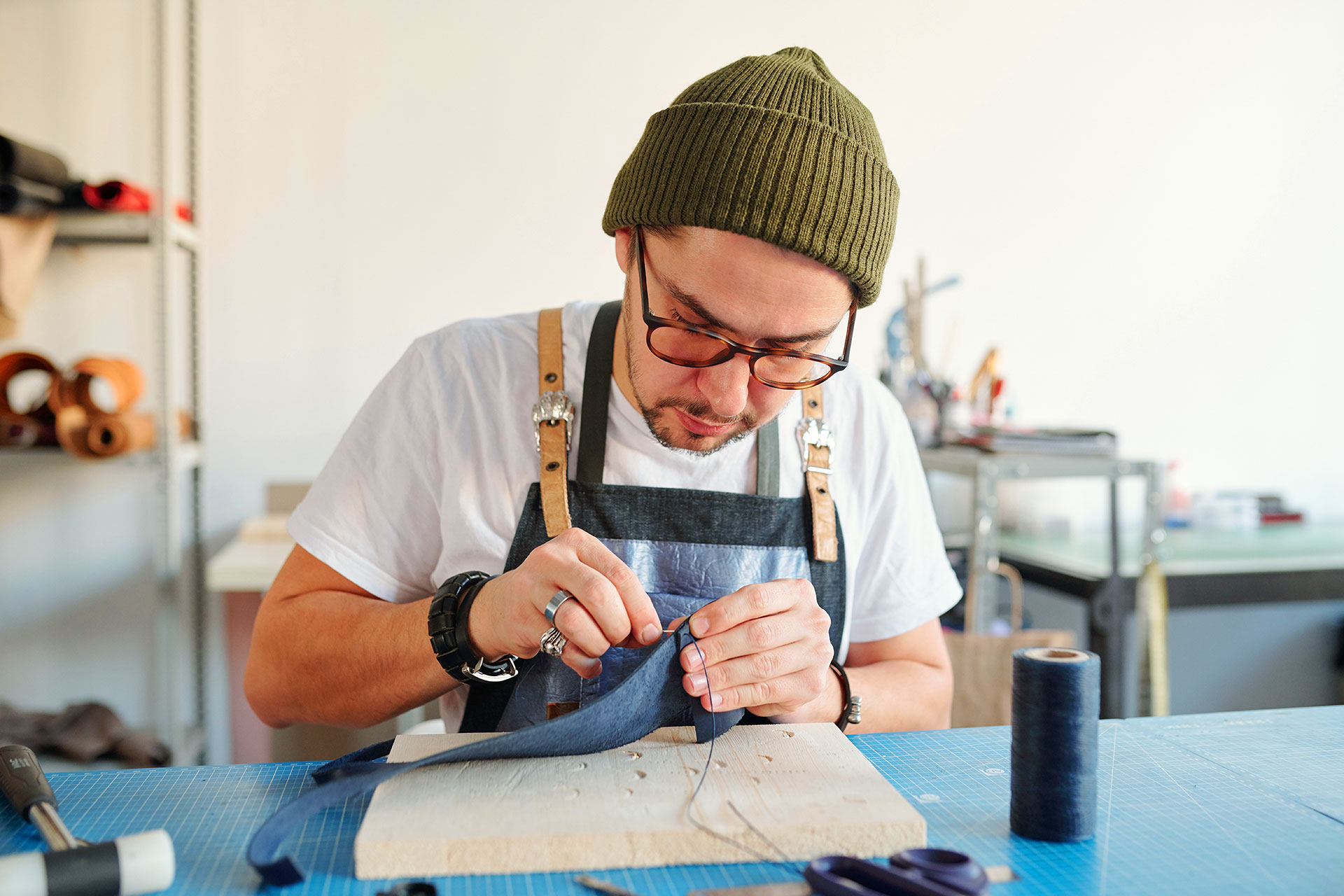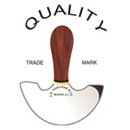
19 May Not all edge tools are created equal — Here’s how to spot the good ones
If you’ve ever worked leather with a mediocre edge tool, you already know: it drags. It skips. It leaves a frayed edge that refuses to burnish cleanly. But the moment you try a great edge tool, the leather seems to respond differently, cleaner, smoother, more confident in your hands.
That difference? It’s not luck. It’s design, material, and a hundred small choices that separate the tools that just do the job from the ones that do it right.
Weight and Balance Tell You a Lot
Pick it up. How does it feel? A good edge tool should feel like an extension of your hand, not clumsy, not too light, and never too slick. The balance should let you guide the tool without effort. You’re not pushing the blade through the leather; you’re letting it move with you.
Heavy isn’t always better. But solid? Absolutely.
Blade Quality Isn’t Just About Sharpness
Sharpness matters, yes, but so does how long it stays sharp. Look for blades made from high-carbon or tool-grade steel. These hold their edge far longer than cheaper metals and respond better to stropping.
Here’s what to check:
- The bevel is clean and symmetrical
- The edge slices rather than tears, even on tough hides
- It hones back to sharpness quickly with minimal effort
If it feels dull after a few passes, that’s not your fault—it’s the steel.
Construction and Fit Speak Volumes
Edge tools should be simple, but solid. The ferrule shouldn’t spin. The blade shouldn’t wiggle. If the handle feels like it might snap or split under pressure, it will—just when you don’t need it to.
A quality edge tool has tight joints, seamless transitions, and a handle that won’t twist when the leather pushes back.
Consistency Is the Real Luxury
You don’t need five different edge tools for five different leathers, you need one that performs the same, every time. A tool that lets you focus on your work instead of adjusting your technique around its flaws.
Because when your edge tool is predictable, your work becomes fluid.
Conclusion
The best edge tools won’t necessarily catch your eye on a shelf. But once you use one—the kind that cuts like it’s reading your intent, you’ll never go back.
And when your edges come out clean the first time, you’ll know you found the one worth keeping.


